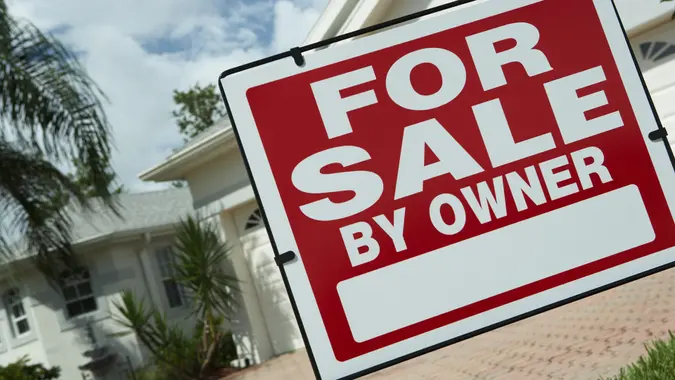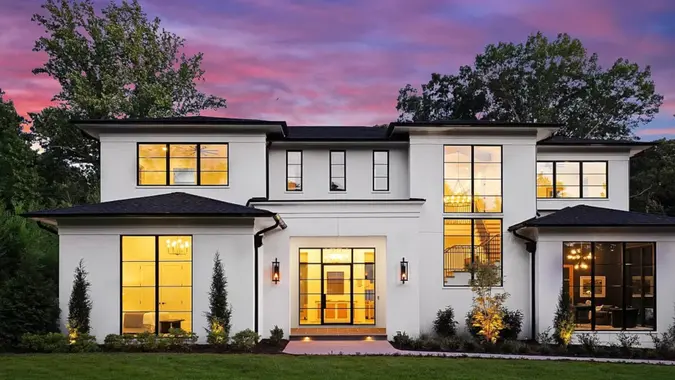5 States With the Most Cramped Homes — Is It Worth Buying Here?

Commitment to Our Readers
GOBankingRates' editorial team is committed to bringing you unbiased reviews and information. We use data-driven methodologies to evaluate financial products and services - our reviews and ratings are not influenced by advertisers. You can read more about our editorial guidelines and our products and services review methodology.

20 Years
Helping You Live Richer

Reviewed
by Experts

Trusted by
Millions of Readers
When buying a home, many families are faced with the question: Is it enough room? It seems like homes are smaller than they used to be.
Kristina Chervenka, COO and co-founder at Five Buffalo Capital, LLC, explained that this is because larger homes aren’t being built as much due to their higher cost. Areas with high costs of living or a lack of demand, she said, will often have more smaller, less expensive homes.
Self storage software company Storeganise recently completed a study to see which state had the most homes on the market with the least space. In the study, the team looked at more than 1 million homes that were primarily under 750 square feet. See which states had the most cramped homes for sale, and if housing experts think they’re still worth moving to.
New York
It’s probably no surprise that New York tops the list. Of the 21,467 homes the state had on the market, 18% of them were under 750 square feet.
“New York is notorious for small square footages and high cost of living,” Chervenka explained.
A small house in New York could be a worthwhile investment, though, for people looking to start with a smaller home to enter homeownership and starting building equity, Chervenka said. “This type of home could later be sold likely for a profit that could be used to purchase a larger home or could provide additional income as a rental home.”
Tennessee
Almost 14% of the homes on the market in Tennessee were under 750 square feet.
Chervenka explained that this could be an advantage for some families looking to own a home. “Young families can benefit from the affordability of smaller homes without the commitment and costs of maintaining a larger home.”
She added that homes built for short-term stays for tourists could be contributing to this. “The prevalence of short-term rentals in Nashville makes this smaller, manageable type of home enticing for investors who are seeking to keep rental expenses low. This prevalence of short- term rentals is also a reason that home purchases may be unattainable for single income households and those on a fixed budget.”
Wyoming
At the time of the study, Wyoming had 2,544 homes for sale, and 13% of them were under 750 square feet.
Eric Preston, CEO of NewConstructionHomes.com, expressed that he doesn’t feel it’s worth moving to Wyoming for a cramped living space. “Residents’ lives should reflect what Wyoming is known for — breathtaking vistas and wide open spaces.”
Preston added that if buyers are looking for a slower way of life, Wyoming is great, but if that isn’t a factor, one should look elsewhere. “If you want more career opportunities and to still experience all the state has to offer, it might be better to live somewhere with larger units that offer more bang for the buck and enjoy Wyoming as a tourist. Families, especially, should focus on living in another state unless it’s impossible for reasons related to employment.”
Pennsylvania
The study revealed that almost 11% of homes on the market in Pennsylvania were going to yield pretty cramped conditions.
Preston said, though Pennsylvania may not be for everyone, the low home prices could make the small spaces worth it. “This is especially true if you are the sole resident or a couple looking to enter the market or for a stopgap rental unit until you can afford more space.”
Ohio
Ohio had 18,978 homes on the market, and 10% of them were under 750 square feet.
Like Pennsylvania, Preston argued that Ohio could still be a good place to move because of the low home prices. “As an investment or first home, Ohio could work. However, as your needs and/or families grow, Ohio might not offer enough to keep you from considering moving to another state.”
More From GOBankingRates
 Written by
Written by  Edited by
Edited by 
























